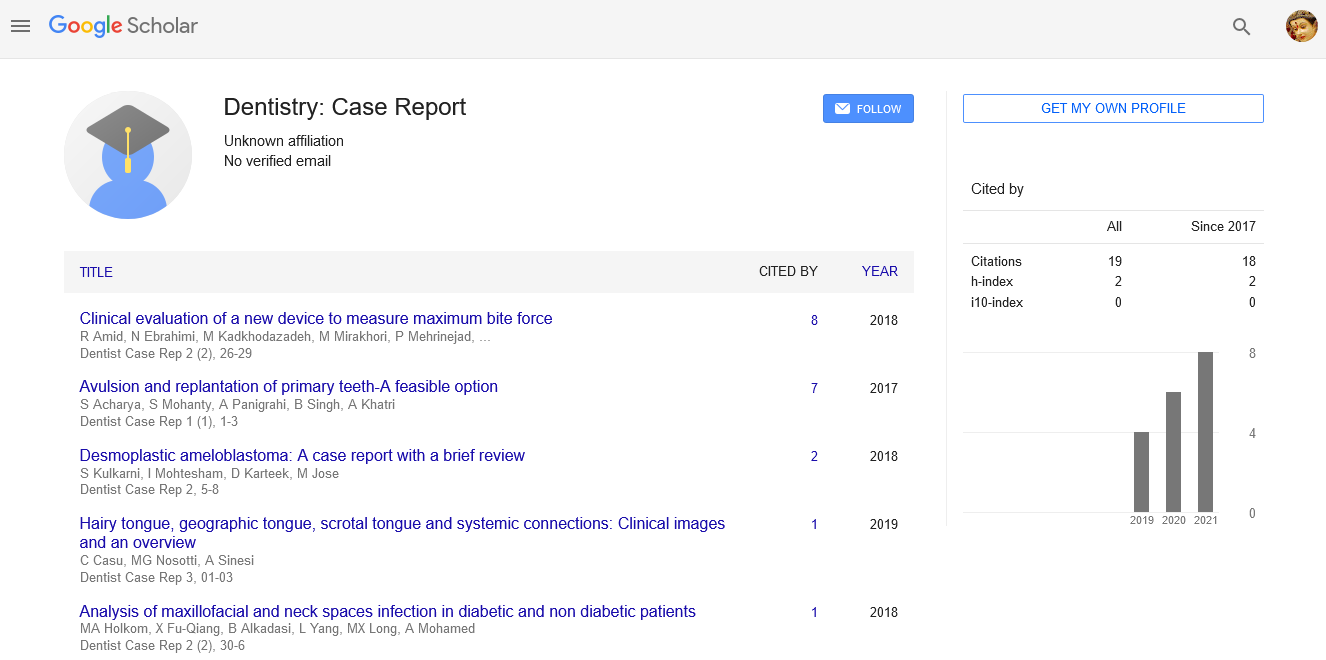Hyaluronic acid in dentistry
Received: 04-May-2018 Accepted Date: May 23, 2018; Published: 31-May-2018
Citation: Al-Wattar MWA. Hyaluronic acid in dentistry. J Dent Oral Res 2018;1(2):33
This open-access article is distributed under the terms of the Creative Commons Attribution Non-Commercial License (CC BY-NC) (http://creativecommons.org/licenses/by-nc/4.0/), which permits reuse, distribution and reproduction of the article, provided that the original work is properly cited and the reuse is restricted to noncommercial purposes. For commercial reuse, contact reprints@pulsus.com
Editorial
Hyaluronic acid is one of the most important components of connective tissue. It present in extracellular matrix of, synovial fluid, and other tissues. Its biological action comes from their relation to growth factors with and rule of the osmotic pressure, and tissue lubrication. All these functions help in maintaining the structural and homeostatic integrity of the tissue. Hyaluronic acid is synthesized by most cells of the body which occurs in the cell membrane by a membrane-bound protein and secreted directly into the extracellular space mainly by fibroblasts in the existence of endotoxins.
In dentistry, hyaluronic acid has shown anti-inflammatory anti-edematous, anti-bacterial and wound healing property which is useful in the treatment of many oral diseases like periodontitis which is mainly caused by different types of bacteria present in sub gingival plaque with mechanical therapy that cause tissue regeneration. This type of treatment would beneficial to many patients especially who are susceptible to systemic diseases like cardiovascular diseases and diabetes which provoked by periodontal diseases.
HA in gingivitis
Nowadays HA is a useful adjuvant treatment in gingivitis therapy. Topical treatment with 0.2% HA either in spray or gel twice daily for a 3-5 week period in addition to scaling and routine oral hygiene had a beneficial effect in the patients affected by gingivitis, improving the plaque indices, papillary bleeding index (PBI), and gingival crevicular fluid (GCF) variables provided a significant improvement in the gingival index (GI) and PBI when compared with other types of treatment.
HA in chronic periodontitis
The local use of HA gel, twice a day for 1 month, in cases with chronic periodontitis, causing reduction in the proliferation rate of the gingival epithelium. However; several studies suggested that a combined treatment composed of full-mouth scaling and root planning (SRP) and the topical administration of HA had a beneficial effect on periodontal health in chronic periodontitis in 1-6 weeks.
The use of HA in implant surgery and sinus lift
During the healing period of immediate function implants, using HA gels. It might be useful in combined treatment using HA 0.2% gel and autologous bone in the first 2 months accelerating new bone formation in infra-bony defects.
The topical administration of a 0.2% HA spray three times a day, for 7 days following impacted third molar surgery to the extraction site, seems to give a usual effect in the management of swelling and trismus during the immediate postoperative period.
The use of a gel containing amino acids and 1.33% HA, topically applied three times per day for 1 week, can promote faster secondary intention healing in laser-induced wounds in patients who underwent an excisional biopsy of the oral soft tissues than the rate of healing the control group.
HA in oral ulcers
The topical application of 0.2% HA gel twice daily for 2 weeks seems to be an effective and safe therapy in patients with recurrent aphthous ulcers (RAU).





